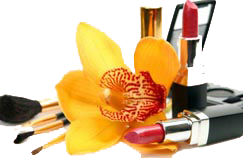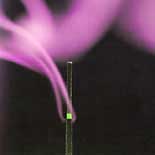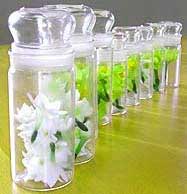Aromatic substances


All fragrant aromatic substances is divided into natural and synthetic. Natural aromatic substances prepared from the mixtures of natural origin, without chemical transformations. Basic methods for isolating aromatic substances from natural raw materials (natural scents) — stripping with steam, extraction, pressing. The most common is steam distillation: through raw mass flow water vapor, then the vapor mixture of essential oil and water are condensed and separate the oil. When the allocation of aromatic substances with extraction the raw materials treated with volatile solvents (e.g., benzol), then distilled it off from the resulting extract. Pressing the zest (top layer of citrus peel, rich in essential oils) get an oil citrus. From now most commonly used essential oils, musk and amber.

When you squeeze the peel of the tangerine and guide press out a fragrant stream to the flames, you see a bright flash, it is burn essential oils. The main components of many essential oils are terpenes with the general formula (C5H8)n and their derivatives — terpenoids. Essential oil — a complex mixture. So, the rose oil contains over 200 different compounds, with are dominated by 2-phenylethanol and the derived terpene citral — citronellol (3,7-dimethyl-6-octene-1-ol), with the rose smell. Natural musk is a product produced from the glands of a male deer. The active component of this aromatic substance that contribute to its smell, is a muskan (3-methylcyclopentadiene-1).
Amber — waxy aromatic substance produced in the digestive tract of cachalot. The main components of the amber (70 %) — non-volatile polyterpene substances (ambrein, apicoplasts), are the holders of smell, because its hold volatile aroma substances in solution, slowing the evaporation from the aromatic mixture. The smell of amber is due to the presence of volatile compounds (less than 0.3%) — products of ambreine oxidation.
How much for the smell
Getting a natural aromatic substances (natural smell) — very expensive and time-consuming process. For example, to allocate 1 kg of rose oil, it is necessary to process about 3 tons of rose petals and to produce 1 kg of musk it is necessary to kill the approximately 30 thousand animals. Therefore, the modern perfume industry is based on synthetic raw materials. Synthetic aromatic substances are go with chemical methods from both industrial and natural raw materials. To 2000 y. is the production of analogues of almost all natural aromatic substances and spices, that are not in nature. Aromatic substances belong to different classes of organic substances. Now didn't find the relationship between the molecular structure of the substance and its smell. Found only some relations.
So, the aromatic subsatnces with a linear carbon chain (alcohols, aldehydes) as a rule, less pronounced smell than smell of their homologues with branched chain. With a pleasant aroma characteristic of subsatnces that have more than 6 carbon atoms in the chain. But more of a certain number of carbon atoms in the molecule leads to the weakening and disappearance of the smell. The aldehydes have the smell similar to the smell of the corresponding alcohols, but more intense. Substances with a branched chain of 7 to 12 carbon atoms have fatty smell.
How to enhance the smell of perfume!

Aromatic substances used, typically, with form of complex mixtures. They are created by the experts-perfumers, the so-called composers.
The structure of modern perfumes in addition to natural and synthetic aromatic substances includes the clips smell, ethyl alcohol, water, resins, extracts, balms and dyes. With aromatic and alcohol content the perfumery products are divided into perfume (20 to 50% aromatics, the rest is alcohol), cologne (2-8% aromatics, up to 80 % alcohol, the rest water), toilet water (1 to 1.5% aromatics, 59-68% alcohol, the rest water). The most persistent smell and, accordingly, higher price have perfume. In the old days its were like a gold!
Surprisingly, the smell of perfume can be enhanced with using ordinary mothballs! Just to add in the bottle two or three crystals of this substance. However, before experimenting on the any perfume bubble of favorite perfume, at first try at the few droplets of liquid and see, as the presence of a new ingredient will affect to smell of perfume compositions.